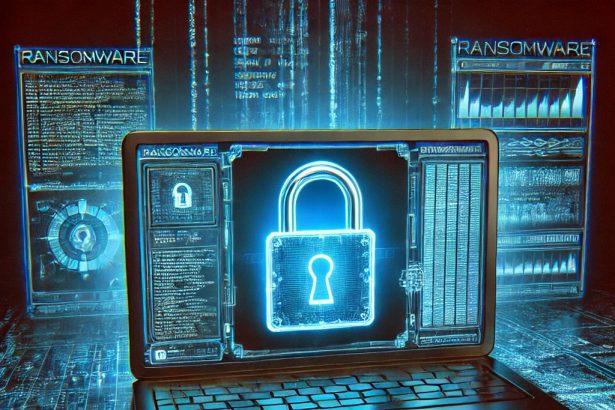Backups Airmail CC Ransomware is a dangerous file-encrypting malware categorized under the notorious STOP/DJVU ransomware family. This threat encrypts victims’ files and extorts payment in cryptocurrency, typically communicating through airmail.cc-based email addresses listed in a ransom note.
Threat Overview
| Detail | Information |
|---|---|
| Threat type | Ransomware (file-encrypting) |
| Encrypted file extension | Typically adds a four-letter extension or .BACKUPS |
| Ransom note file name(s) | _readme.txt |
| Associated email addresses | spysecurelab@airmail.cc, securehunter@airmail.cc |
| Detection names | STOP/DJVU ransomware family |
| Symptoms of infection | Files encrypted and renamed with new extensions, ransom note appears in folders |
| Damage | Loss of access to personal files, deletion of shadow copies, financial extortion |
| Distribution methods | Malicious email attachments, pirated software, cracked applications, fake software updates |
| Danger level | High |
| Removal tool | SpyHunter Download SpyHunter |
Threat Analysis
How I Got Infected
In most cases, victims unknowingly install Backups Airmail CC Ransomware after opening deceptive spam emails that contain malicious attachments or links. Other infection vectors include bundled software downloads, fake installers for legitimate applications, and compromised websites distributing cracked software.
What It Does
Once inside a system, the ransomware encrypts a wide range of files including documents, images, and databases using strong encryption algorithms. It adds a distinct file extension such as .BACKUPS or a unique four-character suffix to each encrypted file. After completing the encryption process, it generates a ransom note named _readme.txt in each affected folder. The malware may also delete shadow volume copies to prevent file recovery via System Restore.
Ransom Note Text
The ransomware typically leaves behind the following message in _readme.txt:
ATTENTION!
Don’t worry, you can return all your files!
All your files like photos, databases, documents and other important files are encrypted with the strongest encryption and unique key.
The only method of recovering files is to purchase decrypt tool and unique key for you.
This software will decrypt all your encrypted files.
To get this software you need to write on our e-mail: spysecurelab@airmail.cc
Reserve e-mail address to contact us: securehunter@airmail.cc
In the letter write your personal ID…
This note is designed to pressure the victim into contacting the attackers and paying a ransom.
Should You Be Worried?
Absolutely. Backups Airmail CC Ransomware uses secure encryption methods and frequently operates with offline keys, meaning even cybersecurity professionals cannot always decrypt files without the attacker’s private key. Paying the ransom is highly discouraged, as there’s no guarantee you will receive the decryption tool. Victims should focus on removing the ransomware and restoring data from a secure backup if available.
Manual Ransomware Removal Process
Important: Manual removal is recommended only for experienced users, as incorrect actions can lead to data loss or incomplete removal of the ransomware. If unsure, consider the SpyHunter Removal Method for a guided, automated solution.
Step 1: Disconnect from the Internet
- Immediately disable Wi-Fi or unplug the Ethernet cable to prevent the ransomware from communicating with remote servers.
- This can prevent additional encryption or further infections.
Step 2: Boot into Safe Mode
For Windows Users
- Windows 10/11:
- Press Windows + R, type
msconfig, and press Enter. - Under the Boot tab, select Safe boot and check Network.
- Click Apply, then OK, and restart your PC.
- Press Windows + R, type
- Windows 7/8:
- Restart your PC and press F8 repeatedly before Windows starts.
- Select Safe Mode with Networking and press Enter.
For Mac Users
- Restart your Mac and hold the Shift key immediately after the startup chime.
- Release the key when the Apple logo appears.
- Your Mac will boot in Safe Mode.
Step 3: Identify and Terminate Malicious Processes
Windows
- Open Task Manager by pressing Ctrl + Shift + Esc.
- Look for unusual processes consuming high CPU or memory.
- Right-click on the suspicious process and select End Task.
Mac
- Open Activity Monitor (Finder > Applications > Utilities > Activity Monitor).
- Look for unknown or high-resource-consuming processes.
- Select the suspicious process and click Force Quit.
Step 4: Delete Ransomware Files
Windows
- Open File Explorer and navigate to:
C:\Users\[Your Username]\AppData\LocalC:\Users\[Your Username]\AppData\RoamingC:\Windows\System32
- Identify and delete suspicious files (randomly named or recently modified items).
- Clear temporary files:
- Press Windows + R, type
%temp%, and hit Enter. - Delete all files in the Temp folder.
- Press Windows + R, type
Mac
- Open Finder and select Go > Go to Folder.
- Type
~/Library/Application Supportand check for unfamiliar files or folders. - Remove unknown
.plistfiles from~/Library/LaunchAgents.
Step 5: Remove Ransomware Entries from Registry or System Settings
Windows
- Press Windows + R, type
regedit, and hit Enter. - Navigate to:
HKEY_CURRENT_USER\SoftwareHKEY_LOCAL_MACHINE\Software
- Identify and delete ransomware-related registry entries.
Mac
- Open System Preferences > Users & Groups.
- Select the Login Items tab and remove any unknown startup programs.
- Check
~/Library/Preferencesfor malicious settings.
Step 6: Restore System Using a Backup or Restore Point
Windows
- Press Windows + R, type
rstrui, and press Enter. - Choose a restore point from before the infection and proceed.
Mac
- Restart your Mac and enter macOS Utilities by holding Command + R.
- Select Restore from Time Machine Backup and restore a safe backup.
Step 7: Attempt to Decrypt Files
- Check No More Ransom (www.nomoreransom.org) for available decryption tools.
- If unavailable, restore files from backups.
Automated Ransomware Removal with SpyHunter
If manual removal is too complex or risky, SpyHunter offers a safer, automated method for detecting and removing ransomware.
Step 1: Download SpyHunter
- Get SpyHunter from the official Enigma Software website.
Step 2: Install SpyHunter
- Open the downloaded file (
SpyHunter-Installer.exeor.dmgfor Mac users). - Follow the installation prompts.
- Launch SpyHunter upon completion.
Step 3: Run a Full System Scan
- Click Start Scan Now to detect malware and ransomware.
- Wait for the scan to complete and review detected threats.
Step 4: Remove Detected Ransomware
- Click Fix Threats to remove identified ransomware components.
- SpyHunter will clean your system automatically.
Step 5: SpyHunter’s Custom Malware HelpDesk
- If ransomware persists, use SpyHunter’s Malware HelpDesk for custom malware fixes.
Step 6: Restore Files
- Use backups stored on external drives or cloud storage.
- If no backup is available, check No More Ransom for decryption tools.
Preventing Future Ransomware Attacks
- Keep backups: Use cloud storage or an external hard drive.
- Install a reliable security tool: SpyHunter offers real-time protection against malware.
- Enable Windows Defender or Mac security features for additional protection.
- Avoid phishing emails and unknown attachments.
- Regularly update Windows, macOS, and installed applications.
Conclusion
Backups Airmail CC Ransomware is an aggressive and high-risk ransomware infection. Its ability to encrypt files irreversibly and remove potential recovery options makes it a serious cybersecurity threat. Users must remain vigilant, avoid suspicious downloads or email attachments, and use strong cybersecurity defenses.
If infected, immediate removal using a reliable tool like SpyHunter is strongly recommended.




